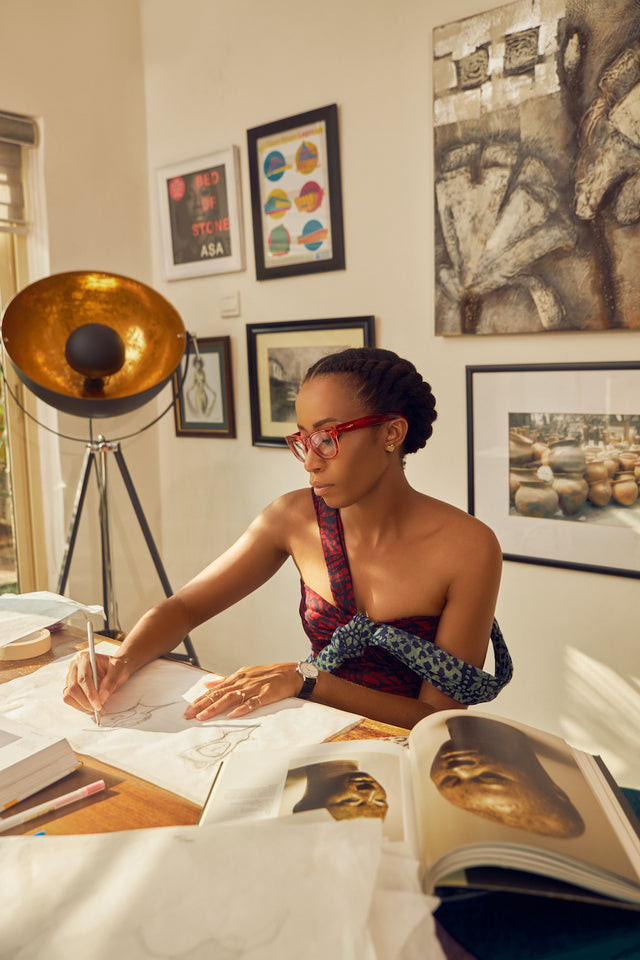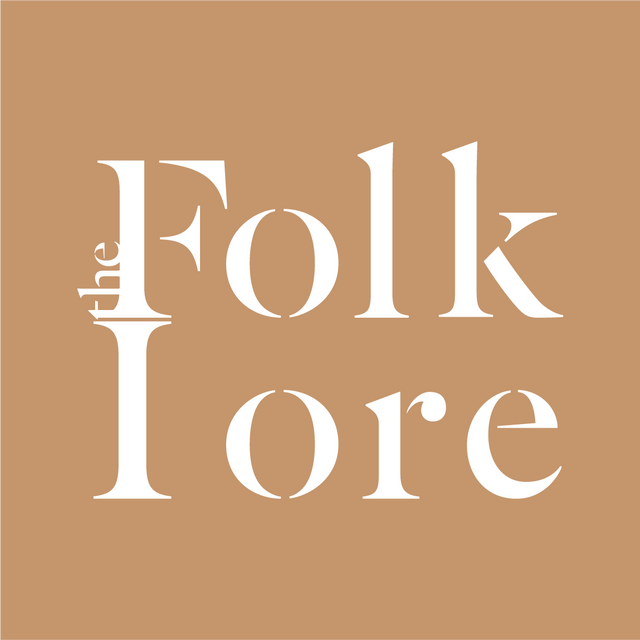Our Folklore: Nigerian Architect Tosin Oshinowo on Creating Designs that Resonate with Culture
The city of Lagos in Nigeria sits right on the coast of the Atlantic Ocean and for the best part of the last decade, beachfront properties that look straight out of a lifestyle magazine began to pop up. If you’ve visited the city, you may even have vacationed at some of the luxurious private beach houses along, such as Sencillo or Ilashe Beach House. The woman behind those stunning structures is architect Tosin Oshinowo, the founder and director of the Nigerian architecture firm CM Design Atelier. Tosin’s company is also the creative brains behind the Maryland Mall, a landmark building popularly known as the “big black box”, which features the longest LED screen billboards in West Africa. In other words, Tosin and her architectural work are larger than life.
Unlike most, Tosin is one of the few people that actually became what they said they would be at a young age. Growing up in Lagos in the 1990s, Tosin had very limited exposure to the outside world, which forced her to be creative with her imagination. She became best friends with sticky tape and would made her own versions of the toys she saw on television. She’d always been interested in spaces but she became particularly inspired when her father was building a house and she discovered that interpreting the floor plans and building drawings came naturally and easily to her.
When she left for the United Kingdom at the age of 16 to study, choosing architecture was a no-brainer for young Tosin and she attended the prestigious Architectural Association school in London. It’s also one of the most competitive schools in the world and, coupled with the extremely hard task of studying a notoriously difficult subject such as architecture, life happened and Tosin found herself at a crossroads. “I failed my final year, after six years… And you can imagine, after this long drama, to fail the final year. And I was just like, this is not it. I was really upset, I was depressed and I told my mom I’m not doing this anymore…” she says.
“My dad sat me down and said, ‘my daughter, I want to tell you something’. And then he says to me that, ‘you see, when a child falls down, they just get up and continue running. When an adult falls down, you’ll first look to see what tripped you before you continue on your journey. Now, this is part of life, you know, not everything will come easy but it’s how you deal with your problems that will determine your strength of character and who you are as a person’. And I’ll be honest, that was the only thing that… gave me strength.”
Tosin took her father’s advice and turned her failure around, going on to work in Europe, Rotterdam to be exact, at architecture firm OMA and she didn’t even have to interview for the job. At her final end-of-year show at the AA, she met the renowned architect and fellow alum Rem Koolhaas, who was so impressed with Tosin’s work and their conversation that he offered her a job on the spot. The rest, as they say, is history.
Beyond architecture, Tosin is an all-round creative who is also a product designer, and she founded the lifestyle brand Ilé Ilà, where she produces contemporary, colourful furniture using traditional and vintage African fabrics. She sits on the board of the Lagos Theatre Festival, the largest performing arts festival in West Africa and she co-curated an art exhibition as part of the 2019 Lagos Biennale. In 2020, she collaborated with Ghanaian designer Chrissa Amuah, in partnership with Lexus, to create conceptual face masks and headpieces in response to the global pandemic.
It was always the plan for Tosin to return to Nigeria after studying in Europe and starting her own firm in Lagos has allowed her to explore her creativity and design nous. Despite the challenges, Tosin has expertly navigated the male-dominated world of architecture and succeeded at it. Next on her to-do list is to promote diversity and conscious design in her work, and create, in her own words, “design that resonates with culture.”
In this episode of Our Folklore, we sat down with Tosin Oshinowo to discuss why there is no such thing as African architecture, her minimalist design aesthetic and how her culture influences her work. Listen to the podcast here and on Apple Podcasts or Spotify, and read excerpts from the interview below.

“In my design world, everything is very clean. Everything is always very clean so my furniture line is very colorful and pop-y but the buildings are always very plain and minimal. I believe spaces should be serene and calming, and then it’s what you populate it with in the interior that should really warm it up. Those are the simple principles I use in all my work.”

“I would consider our style Afro-minimalist. I do like to use wood, I do love plainer colts, always a decent composition in terms of contrast and materiality light is alway very important in our work, how we create bright spaces… I think the best thing is making these decisions about space and standing in the building when it’s finished.”

“This question of identity and who you are and how you represent your work is very, very dear to me. So, my understanding of becoming an architect obviously came from school, my understanding of how to design space, but my culture, I believe, plays a very important role… The bulk of what I learnt about Lagos, where I’m from, was learnt from books. What was really nice about it was that it was almost like a birthing. I was reading stuff and I could mentally relate it to things I had grown up seeing… I’m understanding why things work like this in Nigeria and why buildings look like that. It gave me a confidence of identity that helped me.”

“When I started my office, I started to understand the implications of being a woman because I had mot been exposed to it before. I think because I had a little bit of ignorance, it served me best. I think if I had been too conscious at the very beginning, at every knock I would have been intimidated. The good thing about being so few women in the space is that when you are a woman and you’re good, you then quickly stand above your peers, even a guy who is equally as competent. You get an even higher platform to stand on because you sit on an island, just by nature of your gender. And then I now decided, once I realized that that could be potential power, I deiced to milk it. Yes, I have been very intentional about it.”

“Being the underdog, I’ve taken it to my advantage and it has worked for me so I’m very happy to be a female architect. But anytime anyone wants to push it, I always tell them at the end of the day, I am still an architect, I am competent, I’m not here because I’m a girl. I’m good. I’m actually very good at my job and I happen to be female.”
Images courtesy of Tosin Oshinowo


